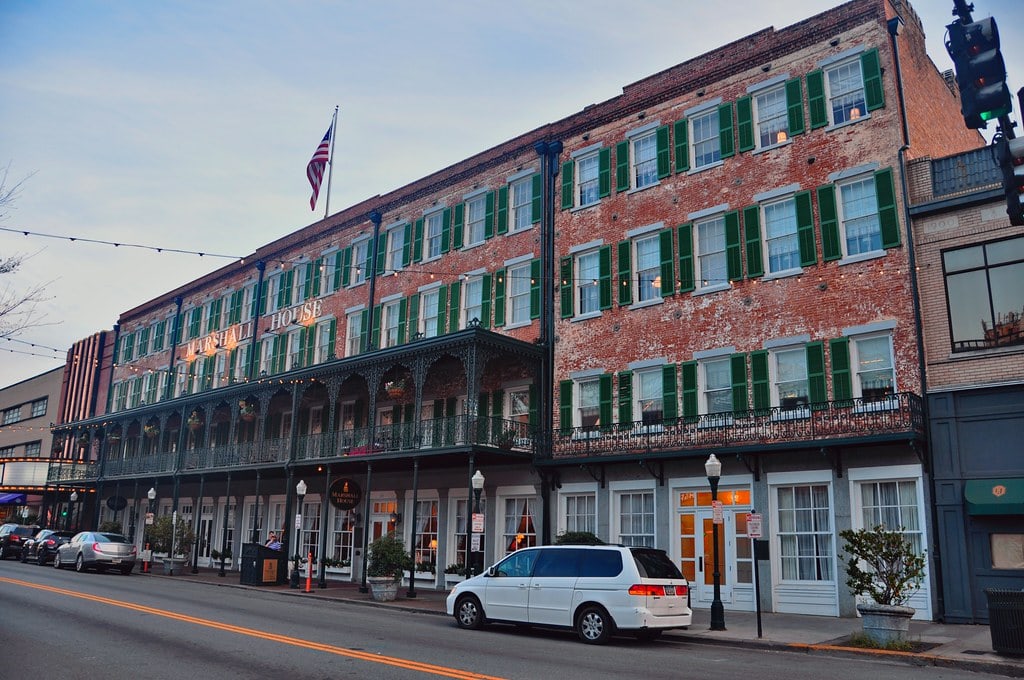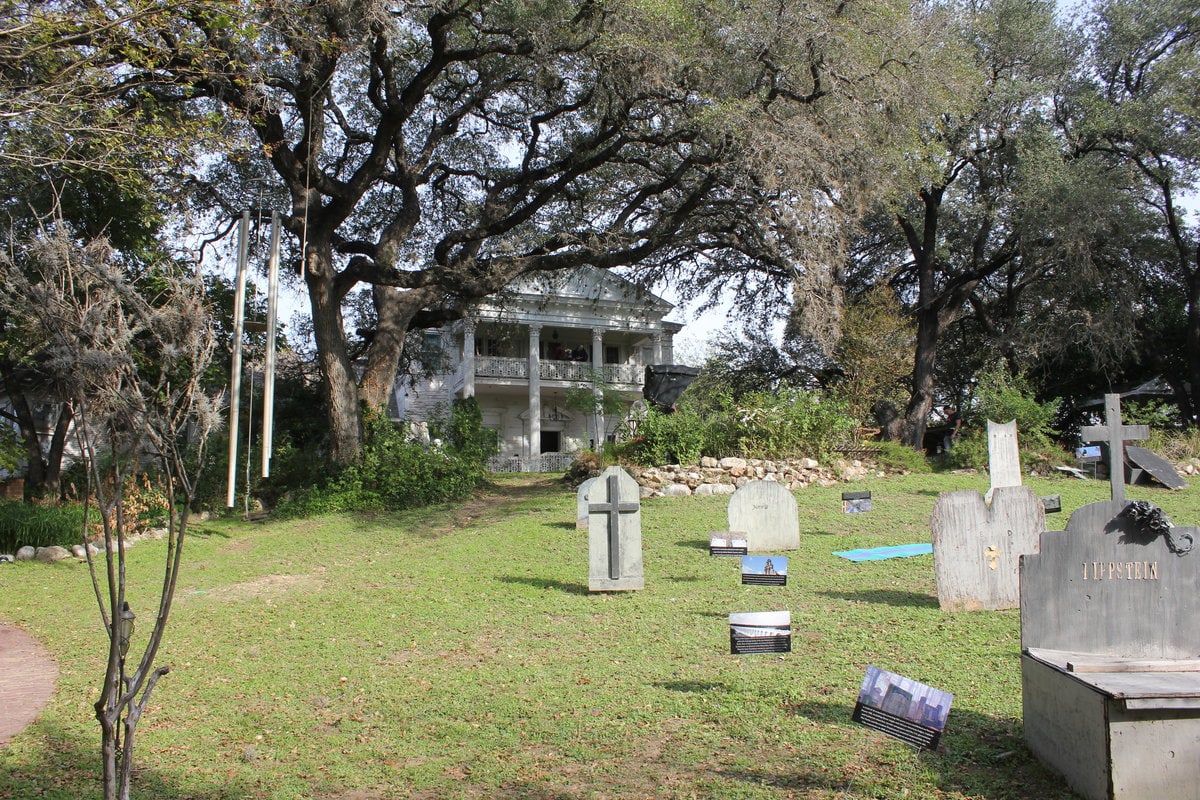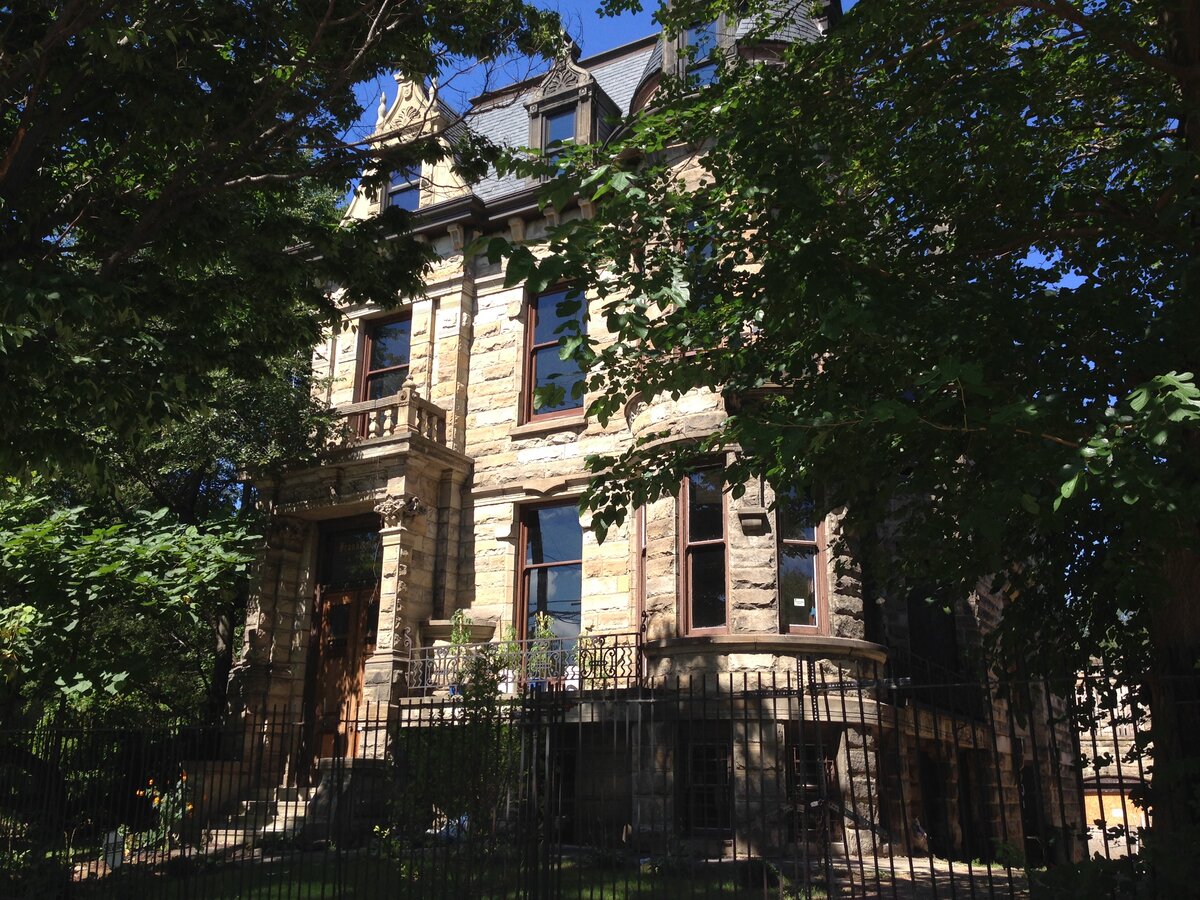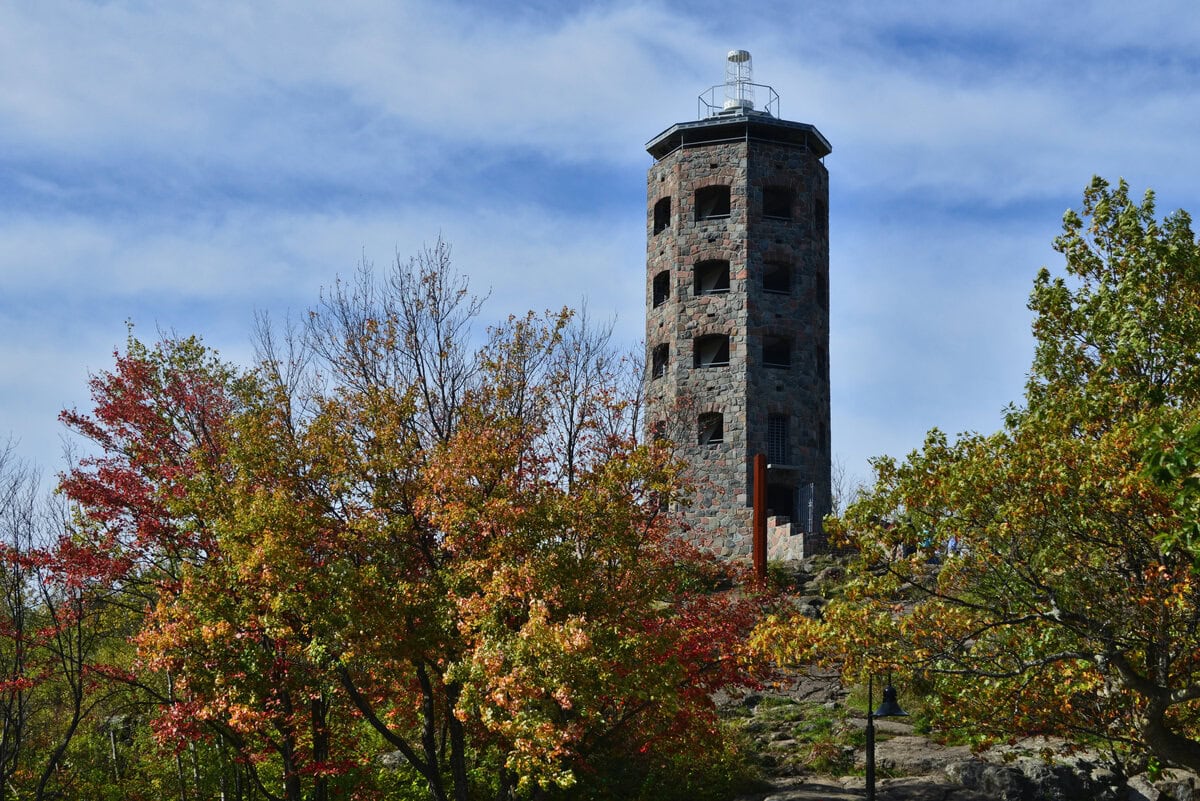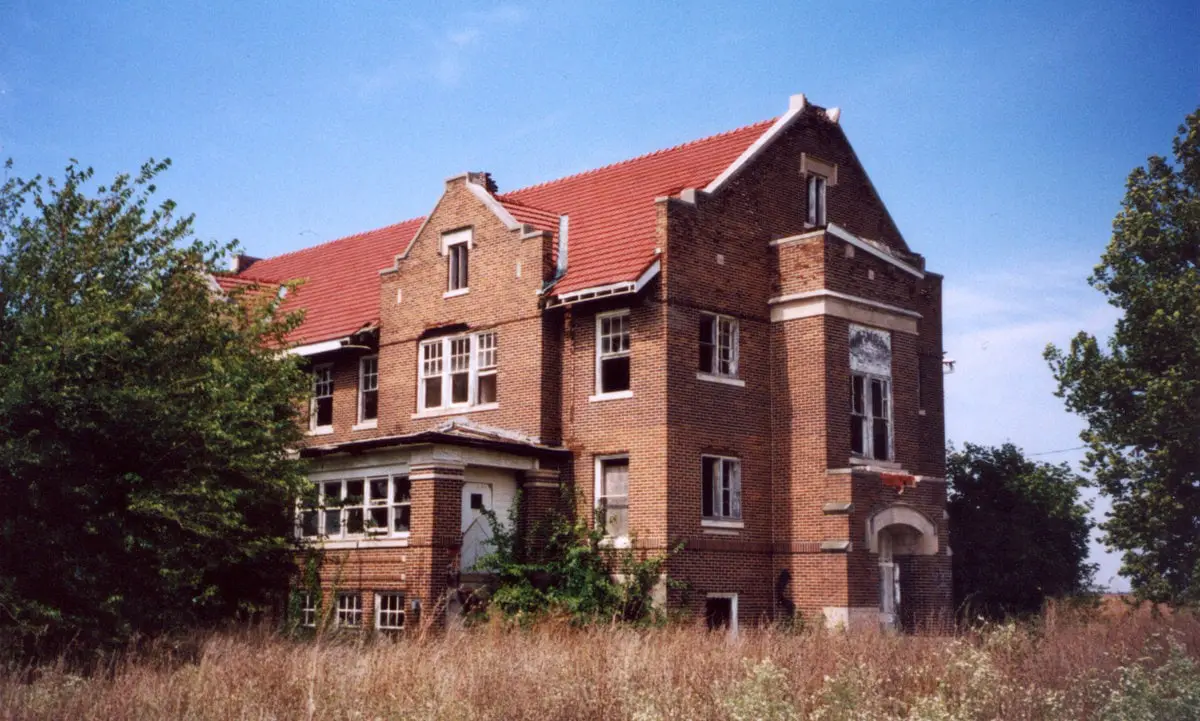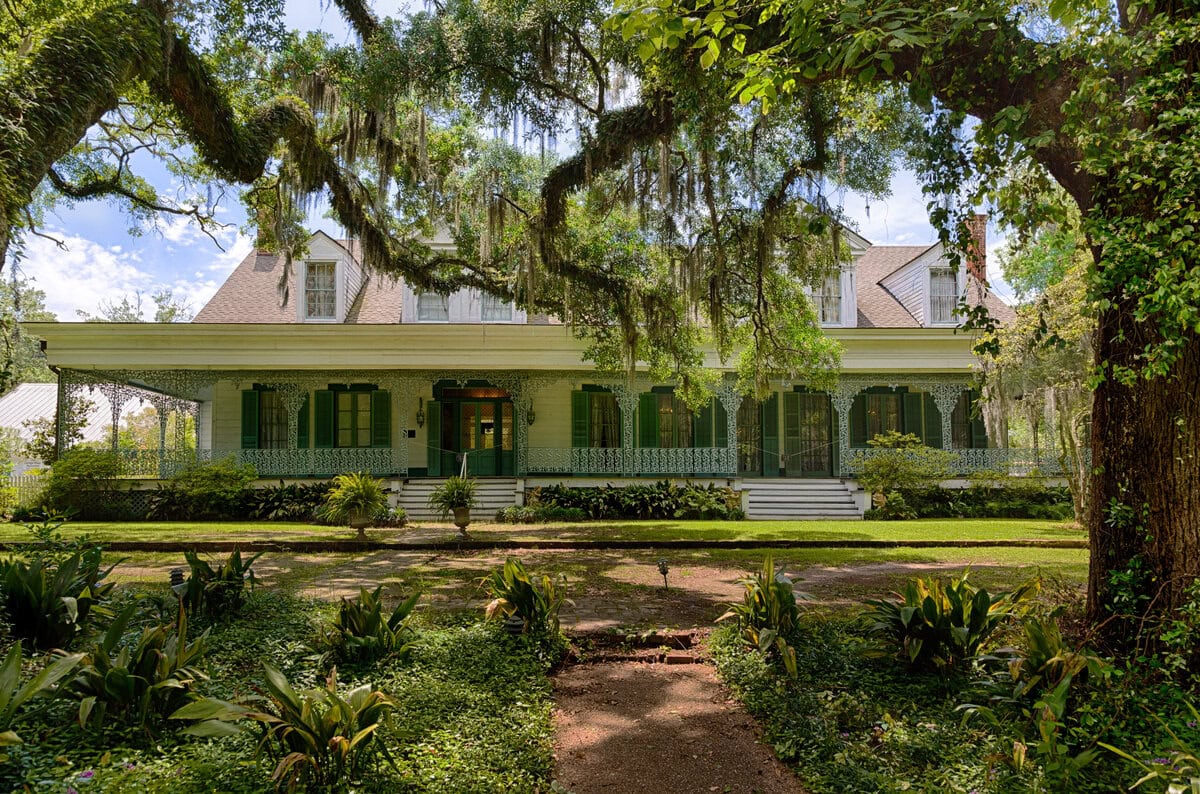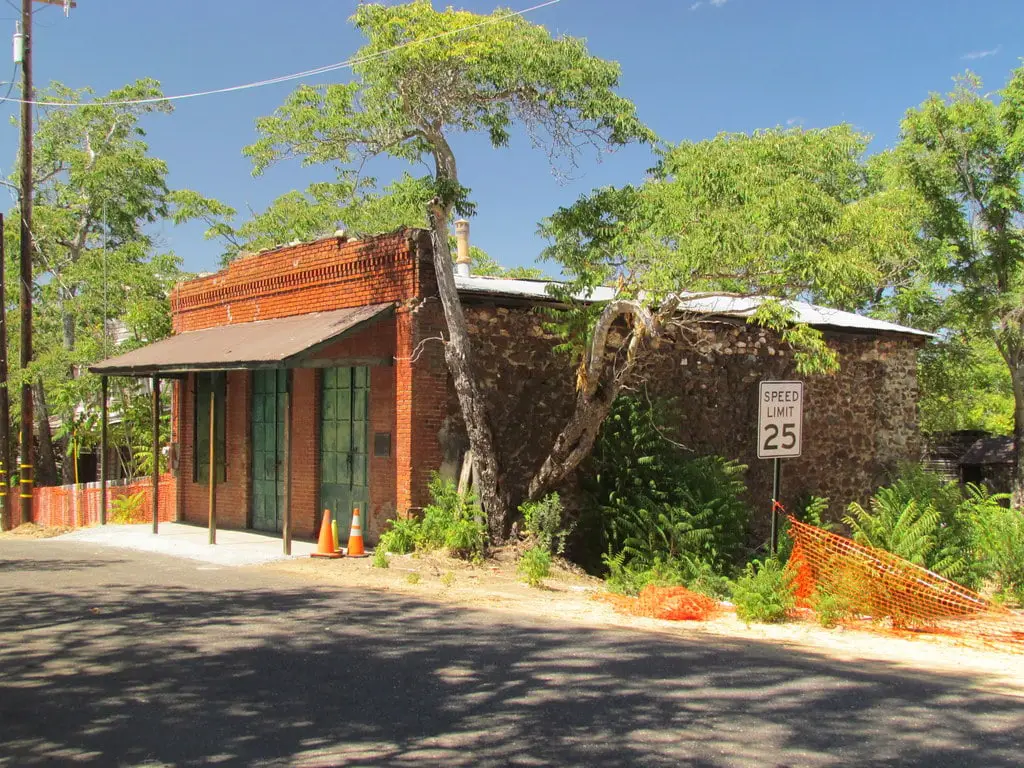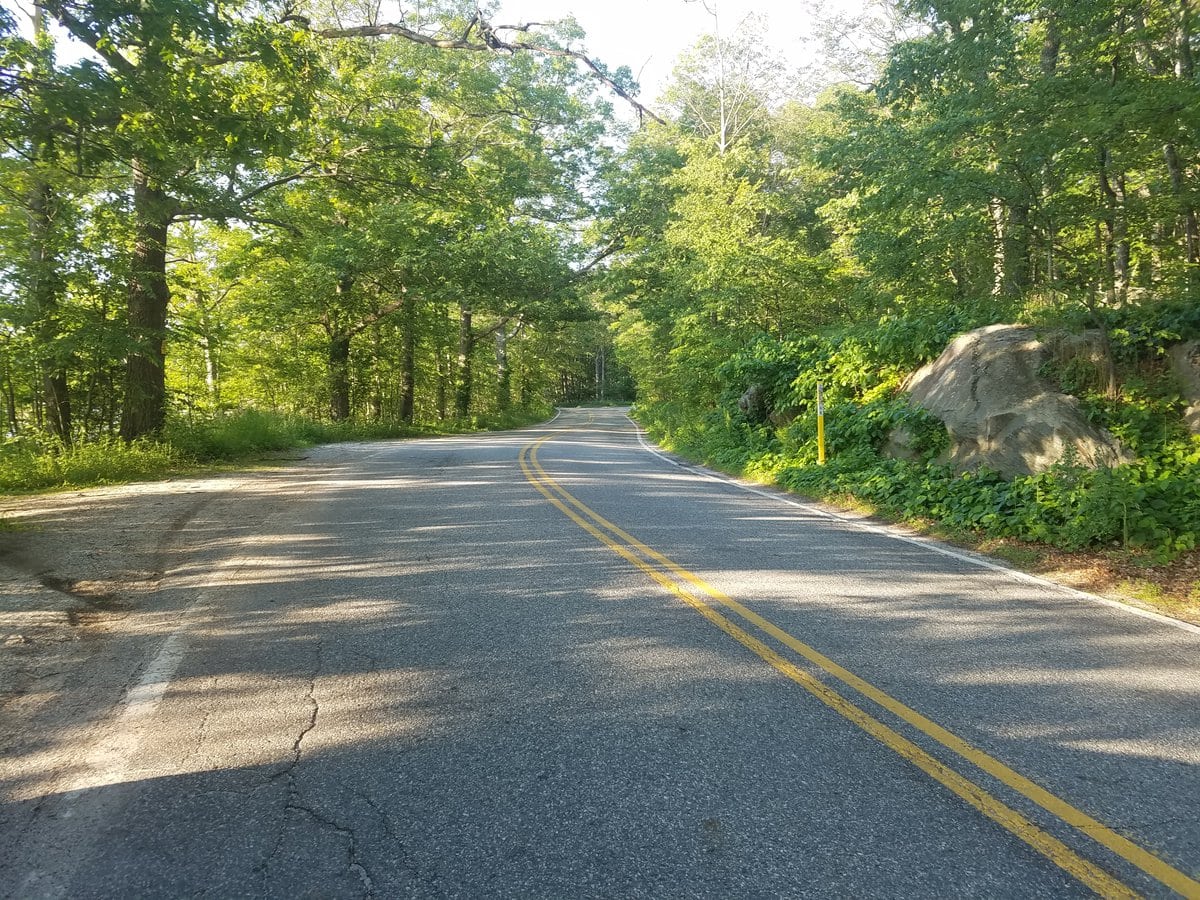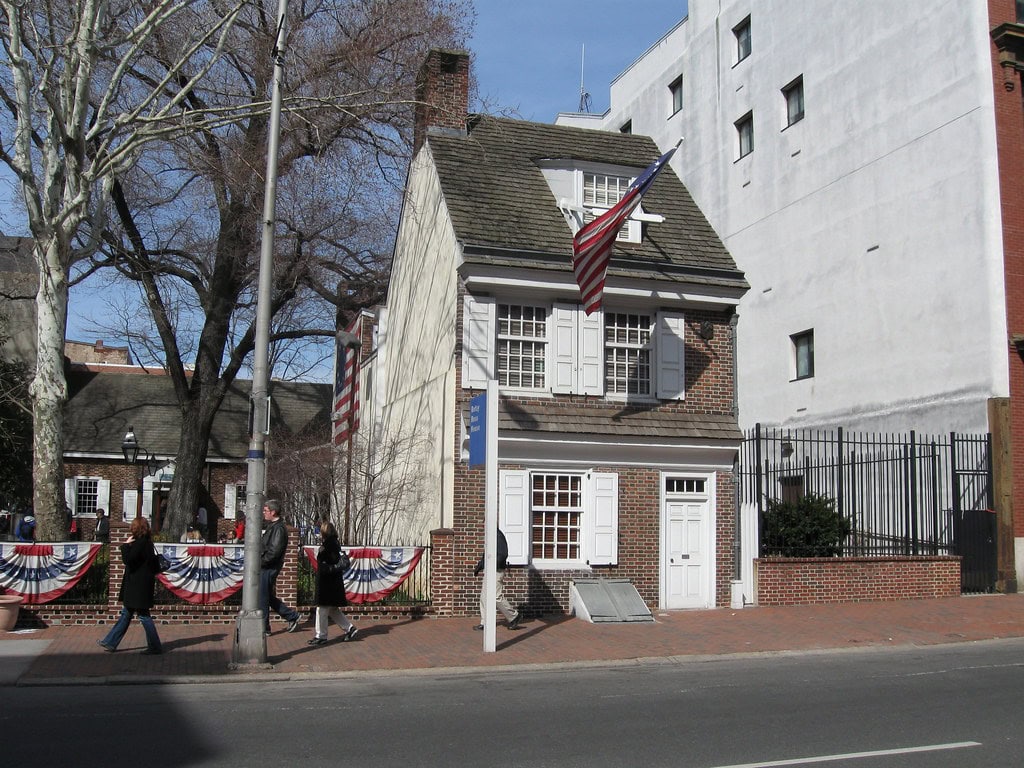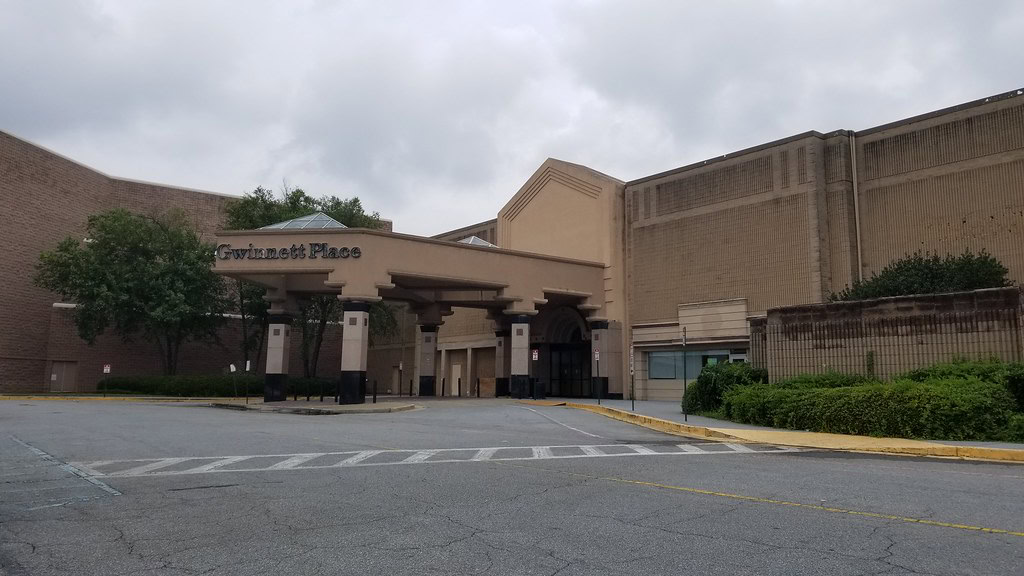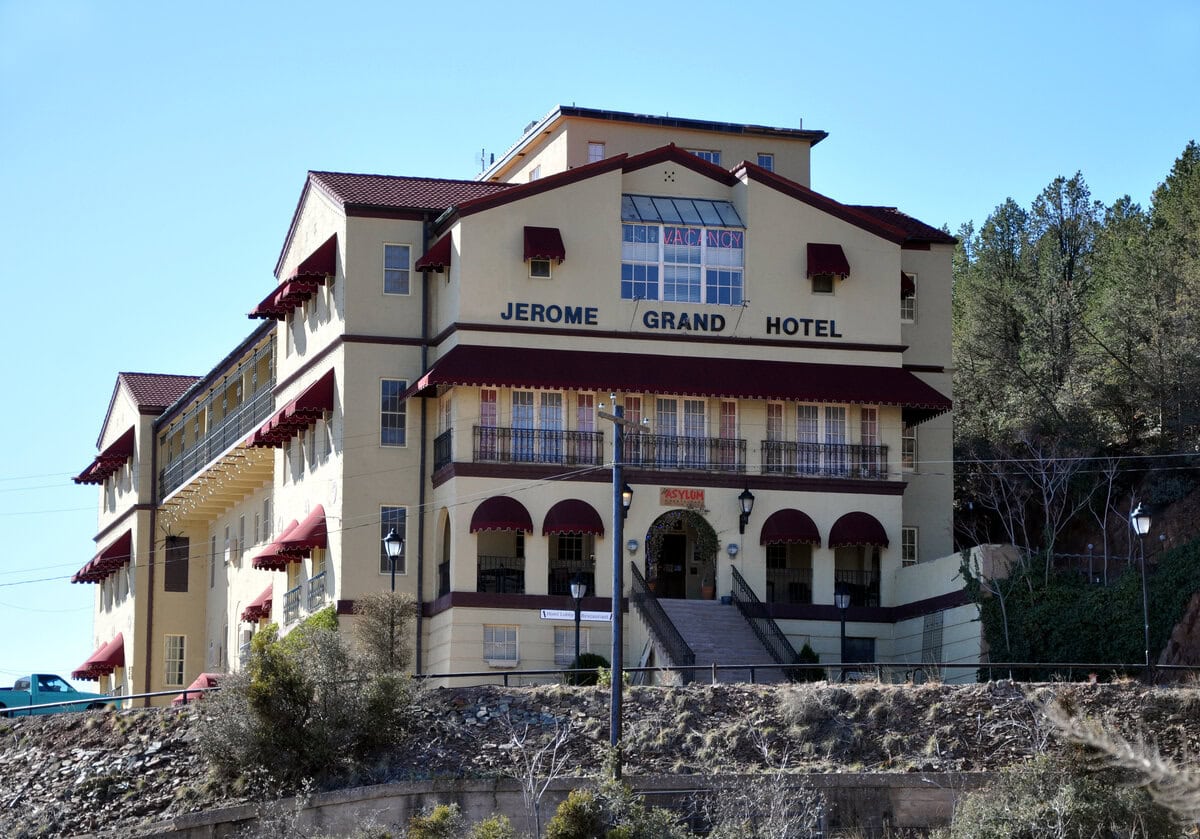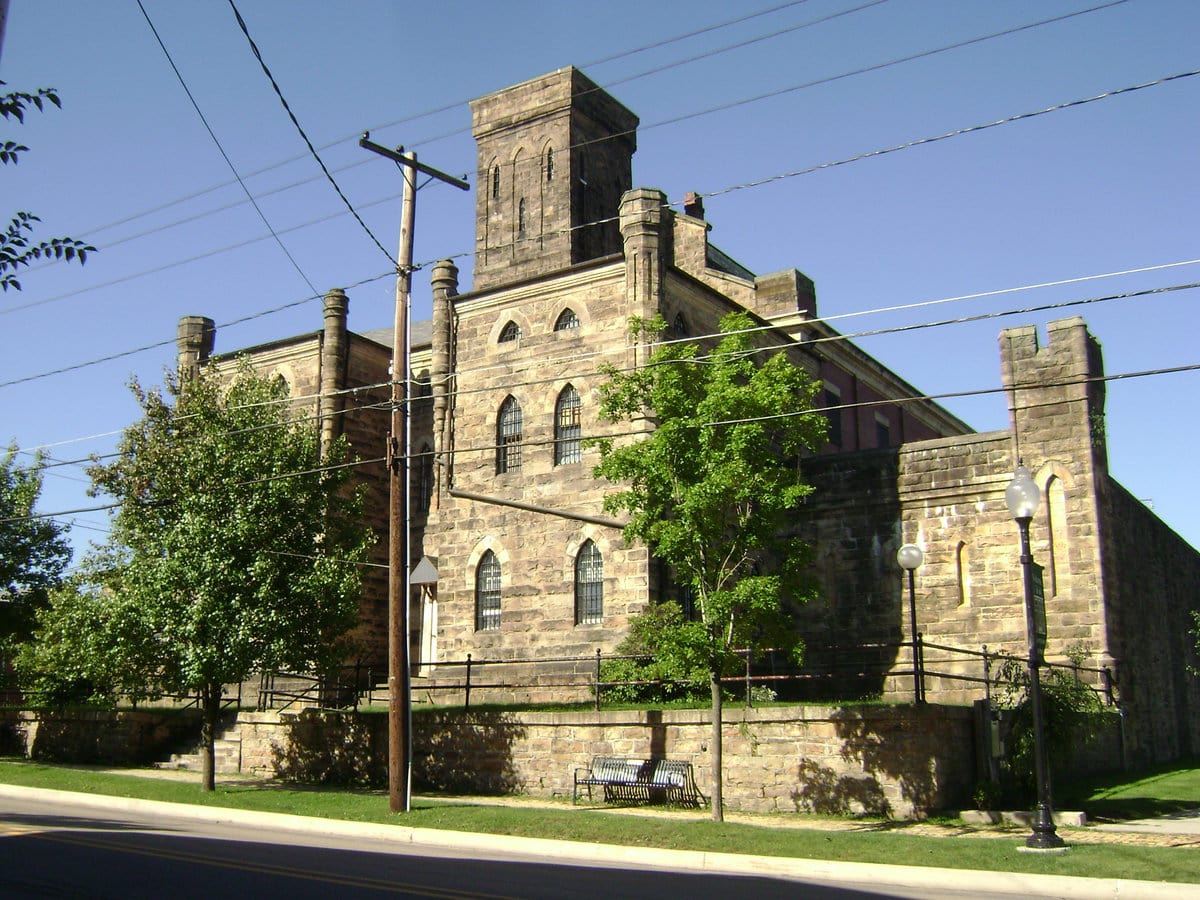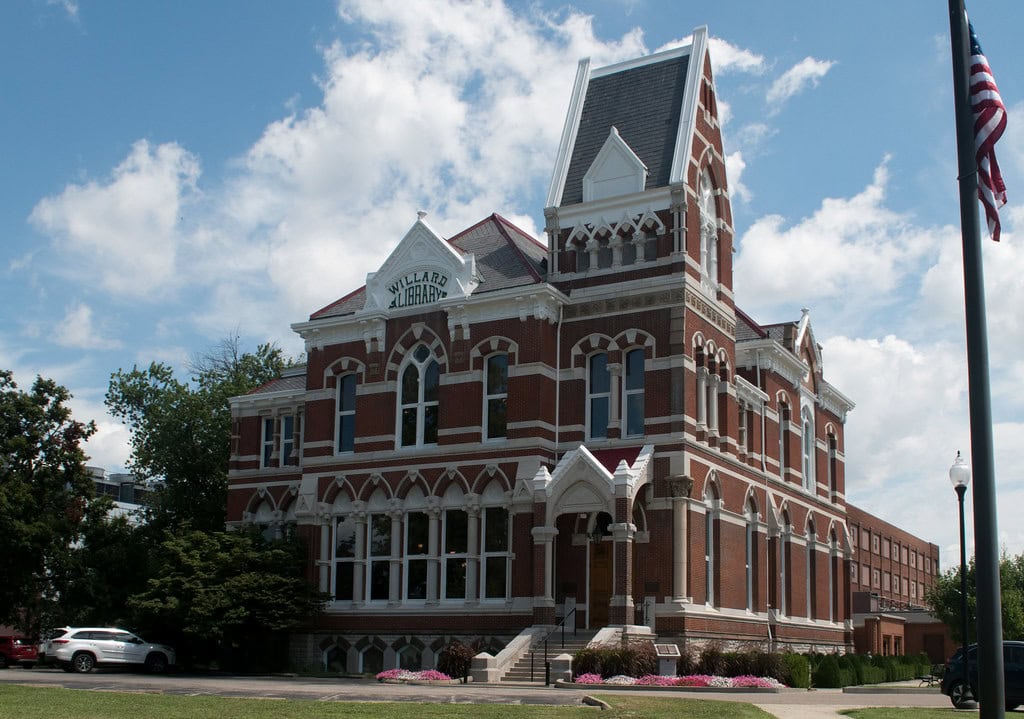Whispers in the Dark: Georgia's Most Chilling Urban Legends
Georgia is a place where history and myth blur together, leaving behind stories that refuse to fade. From old battlefields to forgotten towns, the state is filled with eerie tales that have been passed down for generations. Some are rooted in historical events, while others thrive on whispered accounts and strange happenings.
Whether it's a cursed structure standing defiantly against time, a restless spirit wandering an abandoned prison, or an entire town swallowed by water, these legends have kept people looking over their shoulders for decades.
Ghostly sightings, unexplained sounds, and encounters with the unknown aren't uncommon in places where history runs deep.
Many of Georgia's urban legends stem from real tragedies, lost lives, displaced communities, and moments of chaos that left something behind.
People have sworn they've seen shadowy figures in old hotels, felt unseen hands reach for them in dark waters, or heard voices that couldn't possibly belong to the living.
The deeper you dig into these stories, the harder it becomes to dismiss them as mere superstition.
Lake Lanier's Underwater Ghost Town
A Lake Built Over the Past
Lake Lanier isn't just a man-made reservoir; it's a graveyard of forgotten towns.
The lake was created in the 1950s by the U.S. Army Corps of Engineers. It covers what was once home to entire communities.
Farmland, homes, businesses, and even cemeteries were submerged when the government seized land through eminent domain.
Some buildings were torn down before the flooding, but others, including churches and graveyards, were left behind.
Today, Lake Lanier is one of Georgia's most popular recreational spots, drawing boaters, swimmers, and fishermen.
But beneath the surface, the lake hides the remnants of its past, and some believe those buried under the water have never truly rested.
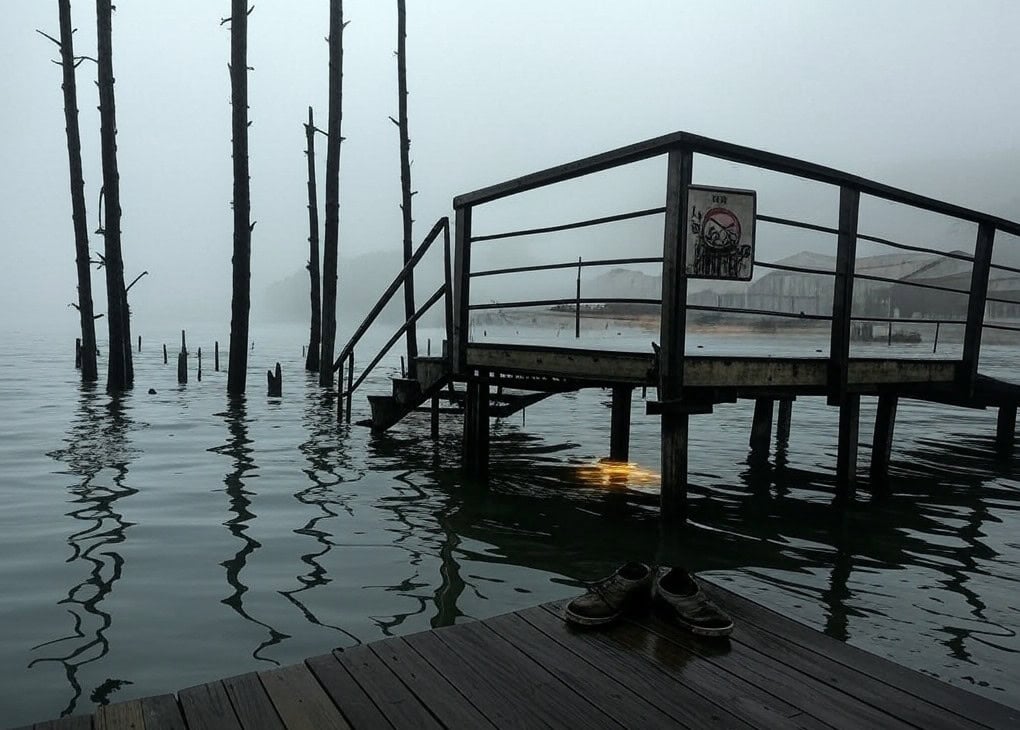
The Forgotten Towns Beneath the Surface
One of the most well-known communities lost to the lake was Oscarville, a predominantly Black town that thrived in the early 1900s.
In 1912, racial violence forced residents to flee, and white settlers took over their land.
Decades later, what was left of Oscarville and other towns in the area was swallowed by Lake Lanier.
Some cemeteries were relocated, but stories persist that not all graves were moved.
Divers who have explored the lake's depths report seeing intact buildings, eerie roads leading to nowhere, and even headstones still standing beneath the murky water.
Strange Deaths and Mysterious Occurrences
Lake Lanier has a troubling number of drownings and boating accidents.
Many of the deaths seem to happen under strange circumstances, strong swimmers pulled under without explanation, boats sinking for no apparent reason, and bodies that vanish for weeks before resurfacing.
Some believe spirits of the displaced haunt the lake, reaching up to drag others down.
Boaters have reported seeing ghostly figures walking across the surface of the water before disappearing into the mist.
Others claim to have felt unseen hands grabbing at their legs while swimming.
The Lake's Reputation and Public Fascination
Despite its haunted reputation, Lake Lanier remains a major attraction in Georgia.
But with every new accident or disappearance, the legend grows. Whether it's the unsettled spirits of Oscarville or something else lurking in the deep, the lake's past refuses to be forgotten.
Altie - The Altamaha-ha Sea Monster
A Creature Lurking in the Water
For centuries, locals along Georgia's southeastern coast have whispered about a creature lurking in the Altamaha River.
Known as "Altie," the Altamaha-ha is said to be a massive, snake-like beast with ridged fins and a long, eel-like body.
Some describe it as grayish-green with flippers, while others claim it has a head similar to a seal or sturgeon.
Sightings stretch back generations, with fishermen, boaters, and even tourists claiming to have seen the mysterious creature break the surface before vanishing into the murky depths.

The Origins of the Legend
The legend of Altie isn't new. The Muscogee people told stories of a great water spirit inhabiting the river long before European settlers arrived.
When Scottish colonists settled near Darien in the 1700s, they also reported seeing a strange, serpent-like beast swimming through the water.
Over time, the legend grew, with more and more sightings fueling the mystery.
Even today, the Altamaha River remains one of the largest, least-developed river basins in the southeastern United States, making it an ideal hiding place for something unknown.
Whether Altie is a relic of prehistoric times or just a product of local imagination, people continue to search for proof.
Eyewitness Accounts and Alleged Evidence
Fishermen tell stories of seeing large, dark shapes moving just below their boats.
Some claim to have watched a creature with multiple humps rise and fall as it swam against the current.
In the 1980s, two men claimed they saw Altie near the marshes, describing it as a 20-foot-long serpent moving through the water with surprising speed.
Occasionally, blurry photos and videos surface, but none provide definitive proof.
Skeptics argue that these sightings could be misidentified manatees, large fish, or even floating logs.
Others believe the creature may be an unknown species or a surviving remnant from ancient times.
Altie in Popular Culture and Local Lore
The town of Darien has embraced the legend, featuring Altie on signs and even a statue at its visitor center.
Some businesses sell Altie-themed souvenirs, and cryptozoologists continue investigating the sightings.
Whether Altie is real or just a story passed down through generations, the legend remains one of Georgia's most enduring mysteries.
The Haunted Spook Bridge
An Abandoned Bridge with a Dark Past
Spook Bridge, an old, crumbling structure on the border of Georgia and Florida, is more than just an eerie ruin.
Once a vital crossing over the Withlacoochee River, the bridge has been closed for decades.
Locals warn that those who visit at night may not return the same.
Stories of ghostly figures, whispers in the wind, and unexplained accidents have given the bridge its reputation as one of the most haunted spots in the South.
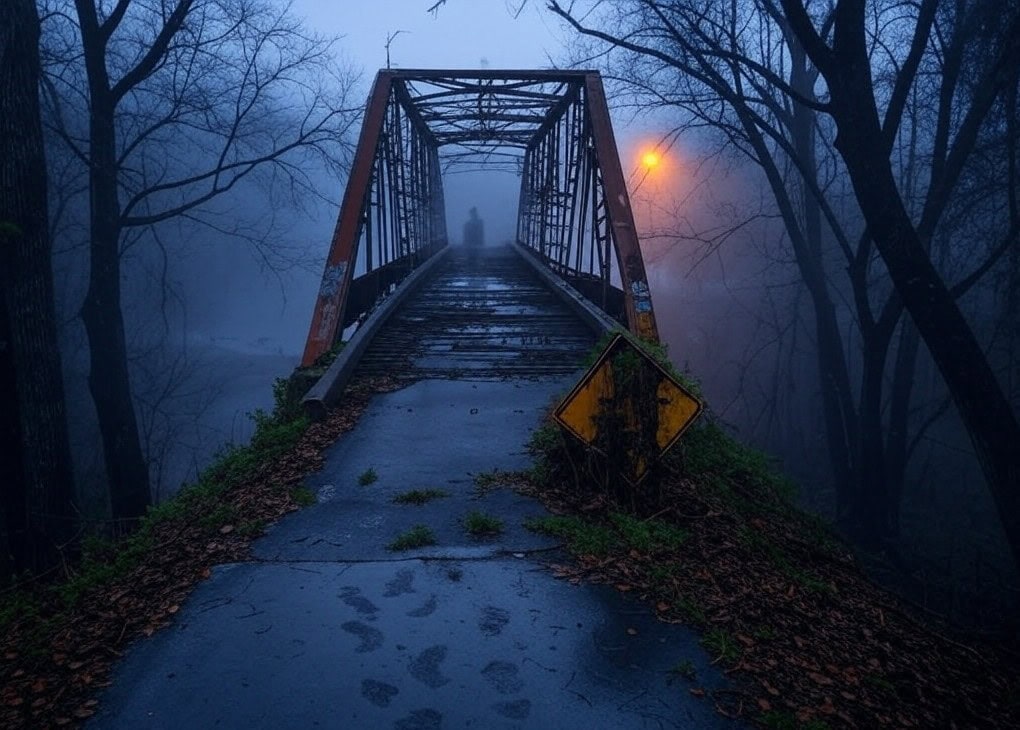
Stories of Death and Tragedy
No official records confirm the exact origins of Spook Bridge's hauntings, but legends have filled in the gaps.
One of the most well-known stories tells of a young couple who crashed their car off the bridge late at night.
Some say their spirits still linger, their shadowy forms appearing along the broken roadway before vanishing into the fog.
Another tale speaks of a school bus that veered off the bridge, killing everyone inside.
While there's no historical evidence of such an event, visitors claim they've heard children's voices echoing near the water.
Others say they've seen wet footprints on the pavement as if something, or someone, had climbed out of the river.
Unexplained Paranormal Activity
Those brave enough to visit Spook Bridge often leave with strange experiences. Many report hearing footsteps on the bridge when no one else is around.
Some feel sudden cold spots, even on hot summer nights. A few have even claimed to see ghostly figures pacing back and forth, disappearing when approached.
The sounds of splashing water are also common, even when the river is still. Some say this is the spirit of a man who drowned under mysterious circumstances.
Others believe the entire bridge is cursed, a place where the past refuses to fade.
Spook Bridge in Folklore and Modern Exploration
Despite being closed to the public, thrill-seekers still visit, hoping to experience its hauntings firsthand.
Some bring recording devices, trying to capture ghostly voices. Others leave in a hurry, convinced they've seen something watching them from the trees.
Whether it's legend or reality, Spook Bridge remains one of Georgia's most feared and fascinating locations.
The Wog of Nodoroc
A Creature Guarding a Cursed Land
Near Winder, Georgia, a strange and eerie place known as Nodoroc has long been feared by those who know its history.
This bubbling mud volcano, once used by Native American tribes as a site of execution, is said to be cursed.
But beyond the deadly quicksand and sulfuric fumes, another legend haunts the land, the Wog.
Described as a monstrous, wolf-like creature with glowing red eyes and a forked tongue, the Wog is believed to be the guardian of Nodoroc, ensuring that no one disturbs the spirits trapped within.

The Mud Volcano and Rituals of the Past
Long before European settlers arrived, the Creek and Cherokee tribes considered Nodoroc a sacred but dangerous place.
The thick, bubbling mud was used as a natural form of execution; criminals or enemies were thrown in, where they sank into the boiling earth, never to be seen again.
Some believed these souls fed the land, strengthening its supernatural energy.
When settlers arrived, they heard stories of strange happenings near the site, including eerie lights and unexplained disappearances.
Encounters with the Wog
The first reported sightings of the Wog came from early settlers who claimed to see a large, shadowy beast lurking near the edges of Nodoroc.
The creature was said to move unnaturally fast, its red eyes glowing even in the darkest nights.
Farmers spoke of missing livestock, their animals disappearing without a trace.
Travelers passing through the area often felt an overwhelming sense of dread, as if something unseen was watching them from the trees.
Even in recent years, hikers and adventurers who visit Nodoroc have reported unsettling experiences.
Some describe hearing low growls coming from the woods, though no animals are seen.
Others claim to have spotted red lights flickering above the mud, only to vanish moments later.
Some believe the Wog is still there, watching over Nodoroc and guarding whatever secrets the land holds.
The Enduring Mystery of Nodoroc
Despite its unsettling past, Nodoroc continues to attract curious visitors. Some come for the history, while others hope for a glimpse of the Wog.
Whether a real creature or a manifestation of the land's dark history, the Wog remains one of Georgia's strangest and most feared legends.
The Moon-Eyed People
A Race of People Who Lived in the Dark
Deep in the Appalachian foothills, the Cherokee tell stories of strange people who once lived in the region.
The Moon-Eyed People, as they were called, were said to be pale-skinned, small in stature, and unable to see in daylight.
They lived underground or in shadowed places, only emerging at night. According to legend, the Cherokee eventually drove them away, disappearing without a trace.
The tale of the Moon-Eyed People has puzzled historians and researchers for years.
Some believe they were an ancient race that predated Native American tribes in the region.
Others think the story might be linked to early European explorers who arrived long before recorded history.
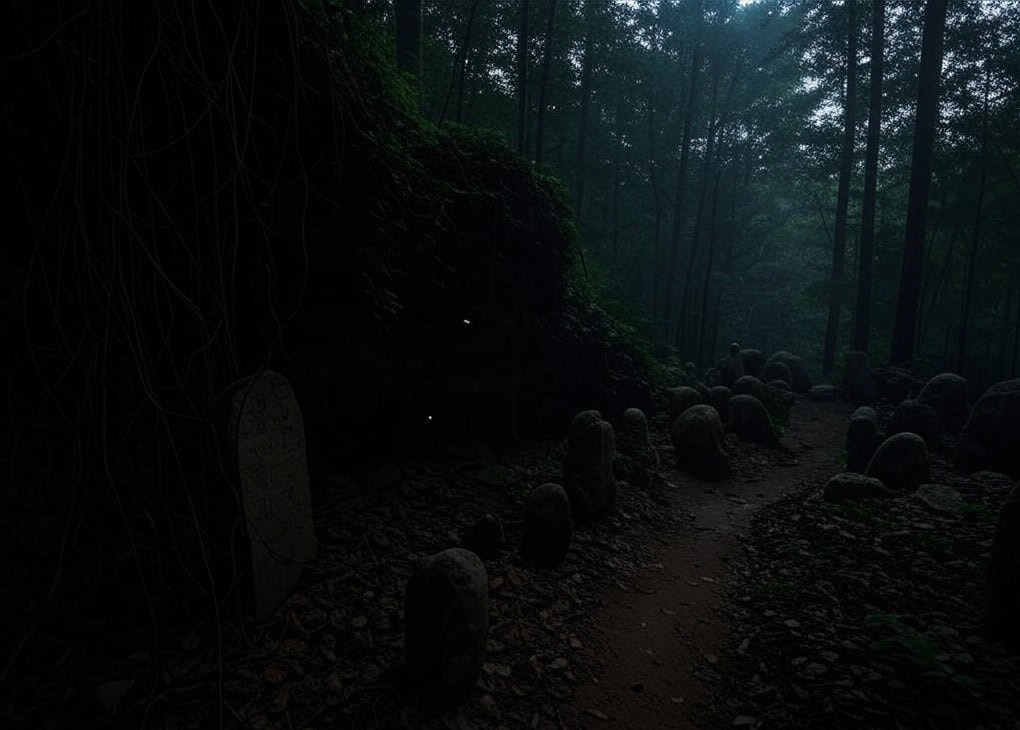
Possible Origins of the Legend
The first written accounts of the Moon-Eyed People came from European settlers who heard the story from the Cherokee.
Some versions describe them as having large, round eyes, so sensitive to sunlight that they could only move at night.
Others claim they lived in stone dwellings, which were later abandoned when the Cherokee forced them out.
One theory suggests that the legend may be based on encounters with a group of early European settlers, possibly the Welsh, who arrived in North America centuries before Columbus.
Some historians point to a 12th-century tale about Prince Madoc, a Welsh explorer who may have landed in the southeastern United States.
If his people intermarried with or lived alongside Native tribes, they could have inspired the legend.
Strange Sightings and Stories
Even today, some believe the Moon-Eyed People never truly disappeared.
Locals in the Appalachian region have reported strange encounters, including glimpses of small, pale figures darting between trees or moving in the shadows of caves.
Others claim to have seen unusual rock structures deep in the forests as if they were remnants of a forgotten civilization.
In the 1800s, a mysterious set of stone ruins was discovered near Fort Mountain in northern Georgia.
Some believe these ruins were once the homes of the Moon-Eyed People, though archaeologists debate their origins.
The Cherokee, however, still tell the story of a people who came before them, ones who feared the light and vanished into the dark.
The Moon-Eyed People in Georgia's Folklore
Whether a lost civilization or a myth born from ancient encounters, the legend of the Moon-Eyed People continues to intrigue.
Some search for proof, hoping to uncover hidden settlements or physical evidence of their existence.
Others believe the story was meant as a warning, one that reminds people that Georgia's past is filled with mysteries that remain unsolved.
Trahlyta's Grave
A Fountain of Eternal Youth
Nestled in the North Georgia mountains, near Stonepile Gap, lies the resting place of a woman whose legend has been told for generations.
Trahlyta, a Cherokee maiden, was said to possess a beauty that never faded. According to the story, she owed her youthful appearance to a sacred spring hidden deep in the forest.
The water, believed to have magical properties, kept her strong and radiant, so long as she drank from it.
That changed when a warrior named Wahsega fell in love with her. Determined to make her his wife, he kidnapped her and took her far from the spring.
Without the water's power, Trahlyta grew weak. Before she died, she asked to be buried near the road so that travelers would honor her by placing stones on her grave.
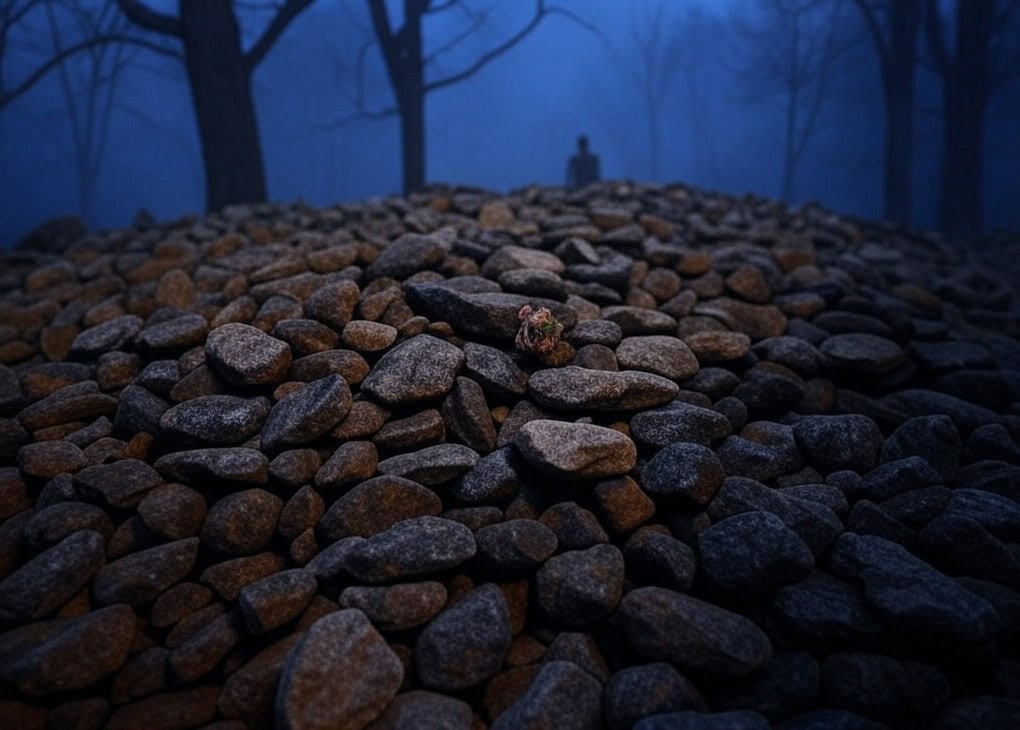
The Myth Surrounding the Stone Pile
Trahlyta's grave is marked not by a traditional headstone but by a mound of stones left by visitors over the centuries.
Some believe that adding a stone to the pile brings good fortune while taking one invites bad luck.
Even today, travelers passing through Stonepile Gap continue the tradition, leaving small rocks as an offering.
The Cherokee believed the spring Trahlyta drank from had healing powers. Known as Trahlyta's Fountain, it once attracted those seeking to restore their health.
Though its location has been lost to time, some claim that the waters still flow, hidden somewhere in the mountains.
Strange Occurrences at the Grave
Many who visit the site say they feel an odd energy around the stone pile. Some report hearing whispers when no one else is there.
Others describe an overwhelming sense of peace or unease, depending on their intentions.
A few have even claimed to see a shadowy figure watching from the woods, disappearing when approached.
Local stories warn against disrespecting the grave. Those who have removed stones in the past often speak of misfortune soon after. Car trouble, sudden illnesses, and unexplained bad luck seem to follow those who disturb the site.
Whether a coincidence or a lingering effect of Trahlyta's final wish, the legend continues to hold power.
A Tradition That Lives On
Trahlyta's story remains woven into Georgia's folklore, drawing visitors who seek luck or simply wish to honor the past.
It is unknown whether her sacred spring still exists, but the stone pile proves that her legend has never been forgotten.
The Curse of the Haunted Pillar in Augusta
A Lone Relic with a Dark Reputation
In downtown Augusta, Georgia, a single pillar once stood near the intersection of Fifth and Broad Streets.
It wasn't much to look at, just an old, weathered column, but locals believed it carried a curse.
Stories claimed that anyone who tried to move or destroy it would meet a terrible fate.
Over the years, multiple accidents and even deaths were linked to the structure, strengthening its eerie reputation.
Though the original pillar was destroyed in 2016 when a vehicle crashed into it, its legend hasn't disappeared.
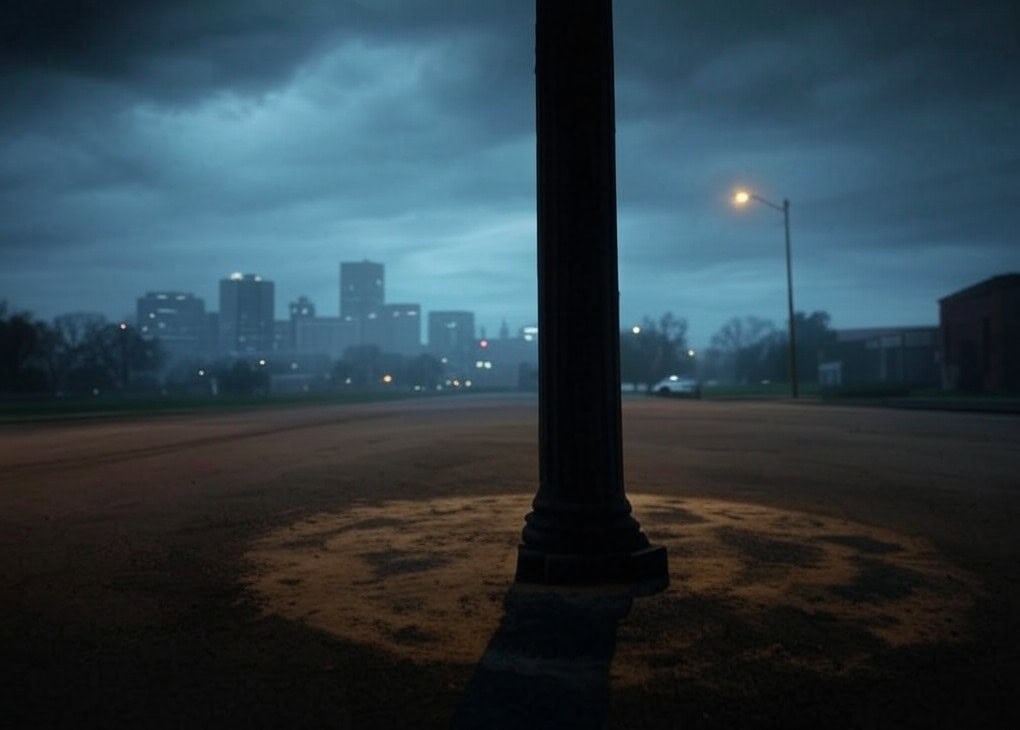
A Storm, a Market, and a Curse
The Haunted Pillar was originally part of Augusta's Lower Market, a bustling trading area built in the early 1800s.
Farmers and merchants gathered there to sell goods, and it remained an important meeting point for years.
According to legend, a traveling preacher once arrived at the market and asked for permission to share his message.
When vendors refused, he became angry, placing a curse on the market, saying nothing but one pillar would remain standing.
In 1878, a tornado tore through Augusta, destroying the market. When the dust settled, a single column remained upright.
Whether the preacher's words were a warning or a coincidence, the pillar became a landmark, drawing visitors intrigued by its story.
Mysterious Accidents and Strange Deaths
Over the decades, multiple incidents reinforced the legend. People who touched the pillar reportedly suffered bad luck or misfortune soon after.
A man who tried to remove it allegedly died unexpectedly. In another case, construction workers attempting to relocate it faced mysterious delays and equipment failures.
These stories spread, making the pillar more than just a piece of Augusta's past; it became a feared object.
A Legend That Won't Fade
Even though the original structure no longer stands, some believe the curse lives on.
The site where the pillar once stood still draws curious visitors, and some locals avoid the area altogether.
Whether it was truly cursed or just the victim of eerie coincidences, its story remains one of Augusta's most unsettling mysteries.
The Ghosts of Andersonville Prison
A Prison Built on Suffering
Andersonville Prison, officially known as Camp Sumter, was one of the most infamous Confederate prison camps during the Civil War.
Located in southwest Georgia, it held thousands of Union soldiers under brutal conditions.
By the time the war ended, nearly 13,000 prisoners had died from disease, starvation, and exposure.
The suffering left a mark, one that many believe never faded. Visitors today report eerie encounters, sudden cold spots, and the sensation of unseen eyes watching them.
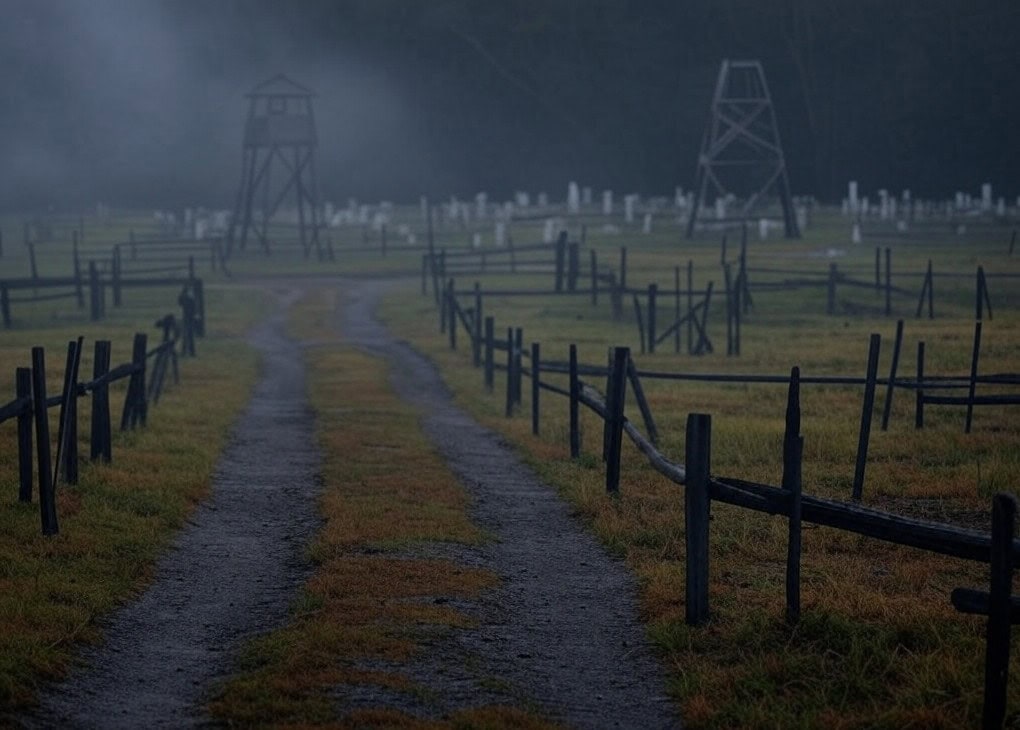
A Place of Desperation and Death
Built in 1864, Andersonville was designed to hold around 10,000 prisoners, but at its peak, more than 32,000 were crammed inside.
The prison lacked proper shelter, and disease spread quickly through the overcrowded, unsanitary conditions.
Guards patrolled a "dead line", a boundary that, if crossed, meant immediate execution.
Many prisoners succumbed to hunger and sickness, while others lost the will to live.
After the war, the camp's commander, Henry Wirz, was tried and hanged for war crimes, one of the few men executed for actions during the Civil War.
Ghostly Encounters at the Historic Site
People visiting Andersonville National Historic Site have reported unsettling experiences.
Some claim to hear the faint sounds of coughing and groaning, as if the prisoners' suffering still lingers in the air.
Others describe shadowy figures moving between the remaining earthworks. Tour guides and staff members have felt sudden drops in temperature on warm days, with no logical explanation.
On rare occasions, visitors say they hear their names whispered when no one else is nearby.
A Haunting Reminder of the Past
The site now serves as a national memorial, with a cemetery honoring those who perished there.
Despite its peaceful appearance, many believe the ghosts of Andersonville remain.
Whether it's the energy of thousands of lost souls or simply the weight of history, something about this place unsettles those who walk its grounds.
The Surrency Bright Spot - Georgia's Poltergeist Mystery
A House Filled with Unseen Forces
In the late 19th century, the quiet town of Surrency became the center of one of Georgia's most bizarre paranormal cases.
The Surrency family home, once an ordinary two-story house, turned into a place of chaos.
Objects moved without explanation, doors slammed shut on their own, and strange lights flickered inside.
Witnesses claimed to see ghostly figures wandering the halls, while the family reported hearing eerie voices echoing through the house.
The disturbances were so extreme that newspapers covered the case, and visitors came hoping to see the activity for themselves.
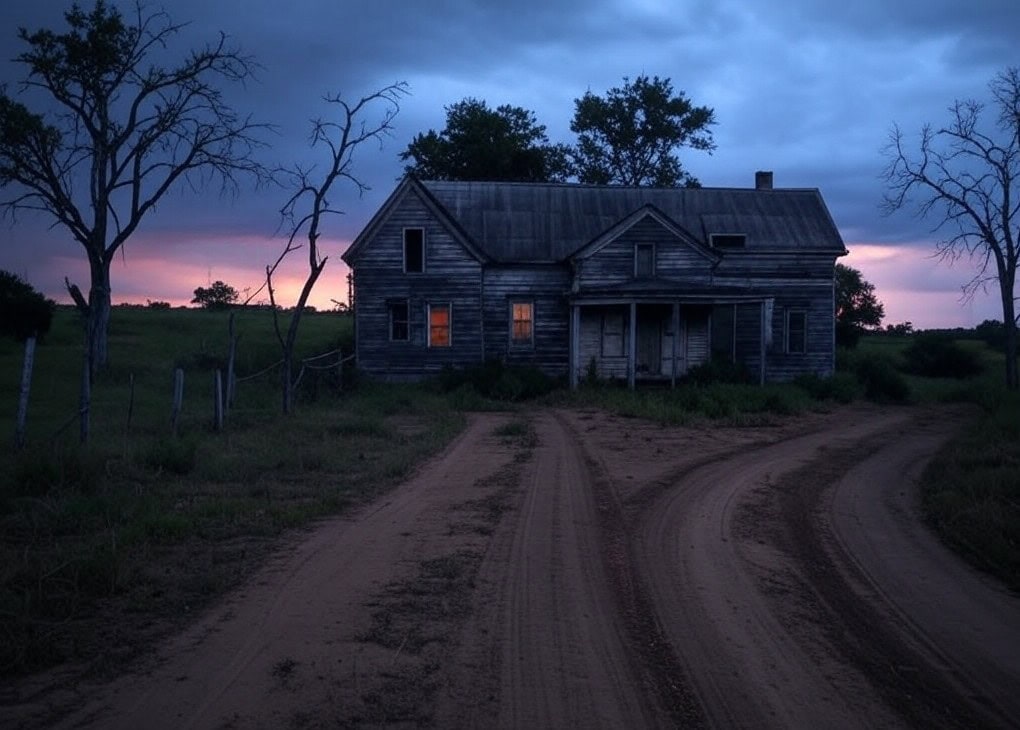
A Peaceful Town with an Unexplained Disturbance
Surrency, located in southeast Georgia, had no history of ghost stories before these strange events began.
The town, named after the family, was a quiet place built around farming and the railroad.
The home's owner, Amos Surrency, was a well-respected businessman. He had no reason to invent a haunting, yet his entire family suffered through years of strange occurrences.
The activity started small, items disappearing or shifting positions, but soon escalated into flying objects, broken glass, and even spontaneous fires.
Witnesses and Unsettling Events
Neighbors, travelers, and even journalists visited the home and left convinced that something unnatural was at work.
Some claimed to see plates rise off tables and crash to the floor. Others reported hearing whispered conversations in empty rooms. The Surrency children were often startled awake by unseen hands shaking their beds.
Even animals on the property acted strangely, refusing to go near the house.
The Haunting That Never Faded
Eventually, the Surrency family moved, hoping to escape whatever plagued their home.
The house later burned down, but the legend never disappeared. Some believe the land itself is cursed, while others think restless spirits still linger in the area.
Even today, people passing through Surrency report strange lights floating over the old property at night, keeping the mystery alive.
The Legend of the Boo Hag - A Gullah Haunting
A Skinless Spirit That Steals Breath
Deep in the folklore of Georgia's coastal regions, an old legend warns of the Boo Hag.
Unlike traditional ghosts, this spirit doesn't haunt abandoned houses or appear as a shadowy figure in the night.
Instead, it creeps into homes while people sleep, stealing their breath and draining their energy.
Those who wake up feeling exhausted, unable to move, or short of breath may have been "ridden" by a Boo Hag during the night.
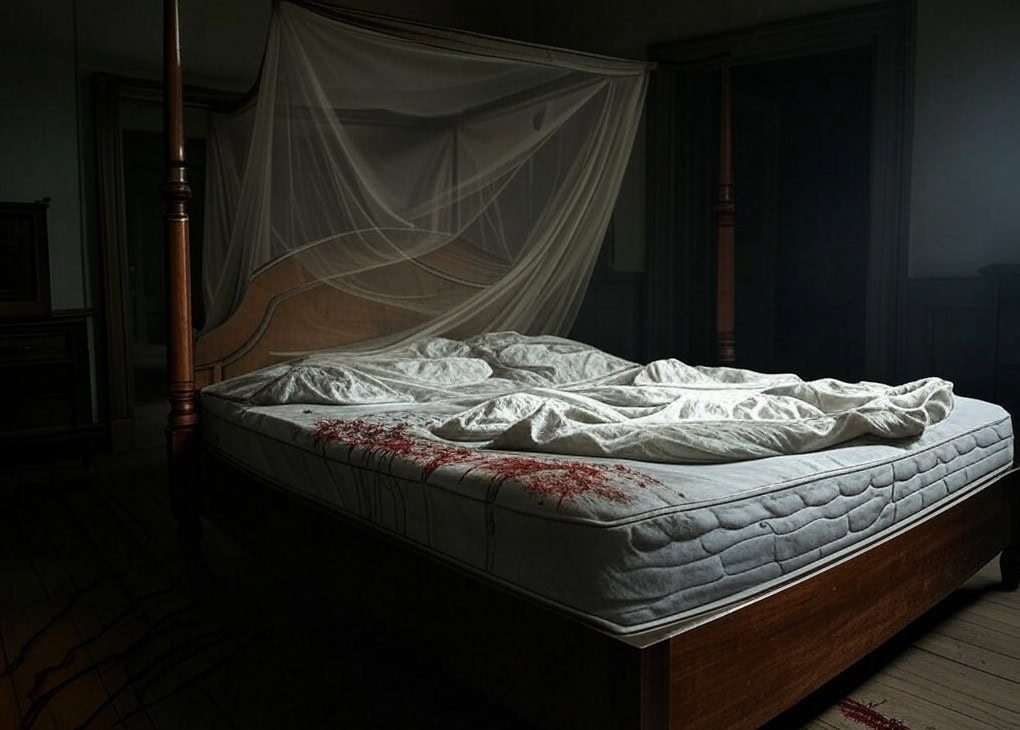
Gullah Roots and Supernatural Warnings
The legend of the Boo Hag comes from the Gullah people, descendants of West African slaves who settled along the southeastern coast.
Their culture is rich with spiritual beliefs, blending African traditions with local customs.
According to the myth, Boo Hags are like vampires, but instead of drinking blood, they feed on a person's life force.
They appear human by day, but at night, they shed their skin and slip through cracks in doors or windows to find a victim.
Signs That a Boo Hag is Near
Many who claim to have encountered a Boo Hag describe waking up unable to move, struggling to breathe as if an invisible weight is pressing on their chest.
Some report seeing a dark figure hovering over them before vanishing. Others have found their bed sheets twisted or signs that someone, or something, was in the room despite locked doors.
Sleep paralysis is often linked to the legend, but believers insist there's more to it than science can explain.
How to Keep a Boo Hag Away
The Gullah people have long followed protective rituals to keep Boo Hags at bay.
One method is to place a broom near the bed. Hags are said to be obsessive counters, so they get distracted by counting the bristles until morning comes.
Another is painting doors and window frames blue, a practice still common in coastal homes.
Whether seen as folklore or a warning, the Boo Hag legend remains one of Georgia's most chilling supernatural tales.
The Haunted Windsor Hotel in Americus
A Grand Hotel with Unfinished Business
The Windsor Hotel in Americus, Georgia, isn't just a historic landmark; it's also one of the state's most haunted buildings.
Built in 1892, the grand Victorian-style hotel was meant to serve wealthy travelers passing through by train.
Over the years, it hosted famous guests, survived economic downturns, and even faced the threat of demolition before being restored.
But many say some of its past residents never checked out. Ghost sightings, unexplained noises, and eerie encounters have become part of its reputation.
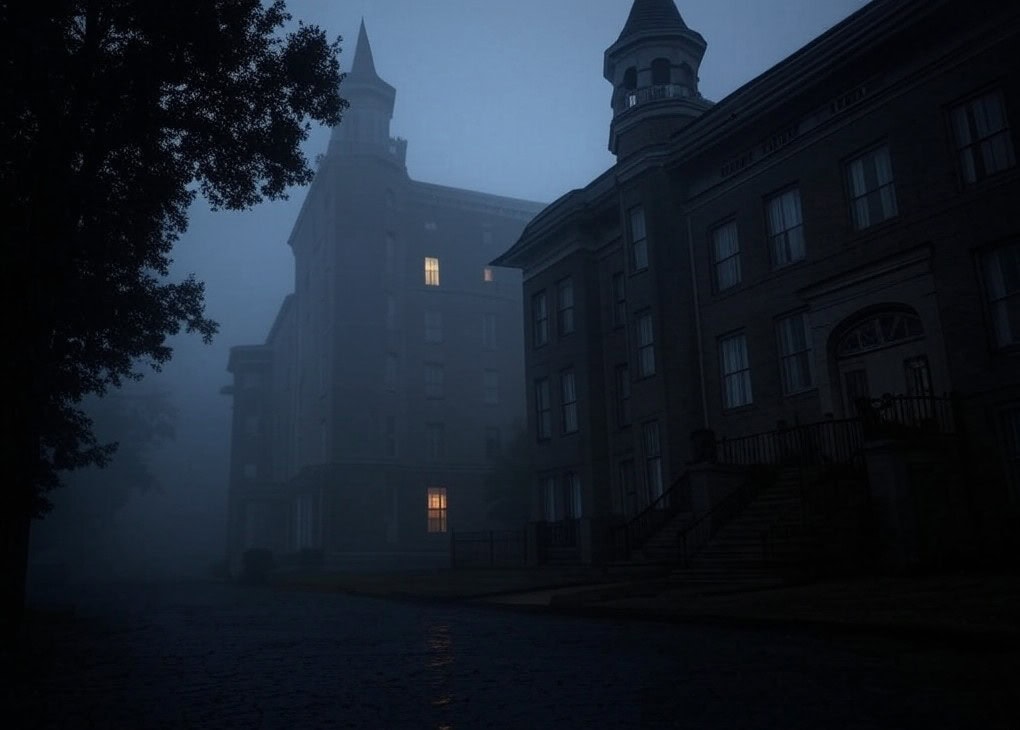
A History of Tragedy Behind Ornate Walls
Windsor's long history includes more than its fair share of misfortune. One of the most well-known spirits is believed to be a housekeeper who lived at the hotel with her young daughter.
According to legend, both died in a tragic accident when they fell, or were pushed, down an elevator shaft.
Their presence still lingers, with guests reporting the sounds of a child's laughter in empty hallways and doors opening on their own.
Staff members have even claimed to see a woman in period clothing wandering the upper floors before vanishing.
Strange Encounters and Paranormal Activity
Those who stay at the Windsor often experience odd occurrences. Some wake up to the feeling of someone sitting on the edge of their bed, only to find no one there.
Others hear whispers in empty rooms or catch glimpses of figures in old-fashioned attire in the mirrors.
One former doorman, known as "Floyd," is said to still roam the hotel, ensuring everything stays in order, even after death.
A Hotel That Embraces Its Ghostly Past
Despite its hauntings, the Windsor remains a fully operational hotel, welcoming tourists and ghost hunters alike.
Paranormal investigators have recorded strange voices, cold spots, and unexplained movements.
Whether visitors come for the history, the architecture, or the ghosts, one thing is certain: the Windsor Hotel has stories to tell.
The Ghosts of the Marshall House in Savannah
A Civil War Hospital Turned Haunted Landmark
Savannah is known for its ghost stories, and few places have as many eerie tales as the Marshall House.
Built in 1851, the building first operated as a hotel but was later used as a hospital during the Civil War.
Soldiers were treated for battle wounds and disease within its walls, many of them never leaving alive.
After the war, the hotel returned to its original purpose, but guests and staff soon reported strange encounters.
Some say the spirits of former patients still roam the halls, making the Marshall House one of the most haunted locations in Savannah.
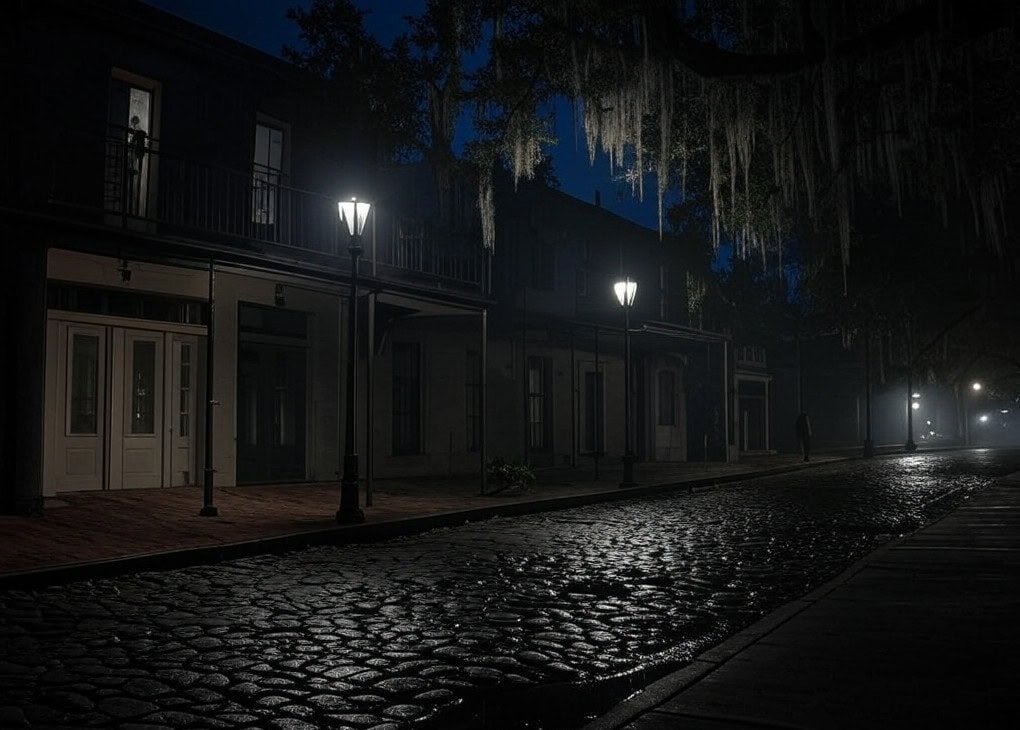
A History Stained by War and Epidemics
During the Civil War, the Marshall House became a makeshift hospital for wounded Union soldiers.
Conditions were brutal, amputation was common, and many who entered the hospital never walked out.
In the late 1800s, the building was used again as a medical facility during yellow fever outbreaks, adding to its grim past.
When renovations began in the 1990s, workers discovered human bones beneath the floorboards, believed to be the remains of amputated limbs discarded during the war.
Unexplained Noises and Paranormal Encounters
Guests and employees frequently report eerie occurrences. Some hear phantom footsteps in empty hallways, while others wake up to find their belongings moved or their bedsheets tugged by unseen hands.
Some visitors describe seeing shadowy figures dressed in Civil War-era clothing disappearing the moment they try to focus on them.
Faucets turn on and off by themselves, and doors creak open with no one nearby. The ghost of a little girl has also been spotted, sometimes giggling, other times simply watching guests before vanishing into thin air.
A Hotel That Embraces Its Haunted Reputation
Unlike some historic hotels that downplay their ghost stories, the Marshall House leans into its reputation.
Paranormal investigators frequently visit, and guests hoping for a supernatural experience book specific rooms known for activity.
Whether skeptics or believers, those who stay at the Marshall House often leave with stories they can't quite explain.
The Haunted Old Governor's Mansion in Milledgeville
A Political Landmark with a Ghostly Past
The Old Governor's Mansion in Milledgeville stands as one of Georgia's most well-preserved historic sites.
Built in 1839, it served as the official residence for Georgia's governors until 1868, when the capital moved to Atlanta.
Over the years, the mansion housed politicians, soldiers, and visiting dignitaries, but many believe some of its former residents never truly left.
Staff members, visitors, and historians have reported unexplained footsteps, ghostly figures, and eerie whispers echoing through its halls.
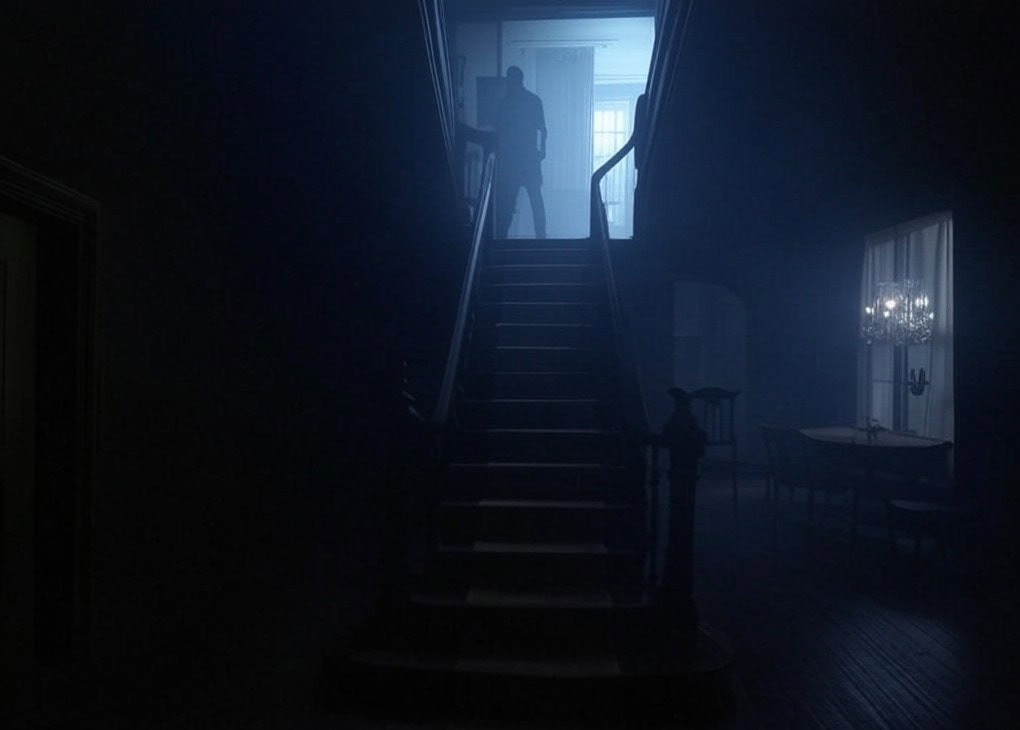
A Home Touched by War and Tragedy
During the Civil War, Union General William T. Sherman took over the mansion in 1864 as part of his infamous March to the Sea.
His troops used the building as a temporary headquarters, and though they didn't burn it, their presence left a mark.
Before the war, several governors and their families lived there, some losing loved ones to illness within its walls.
The stories of restless spirits likely come from these personal tragedies, combined with the violent history of the war.
Ghostly Sightings and Unexplained Sounds
Visitors frequently describe hearing footsteps in empty hallways and seeing shadowy figures on the grand staircase.
Some report the sound of a child laughing, though no children are present. A few have even claimed to see the apparition of a woman dressed in 19th-century clothing standing by a window, gazing out as if waiting for someone to return.
Staff members have also mentioned doors opening and closing on their own and objects moving without explanation.
A Haunting That Attracts History Lovers and Paranormal Seekers
Today, the mansion operates as a museum, drawing history buffs and ghost hunters alike.
Paranormal investigators have recorded unusual energy readings and unexplained voices.
Whether visitors come for the architecture, the Civil War history, or the possibility of an encounter with the unknown, the Old Governor's Mansion remains one of Georgia's most mysterious historic sites.
The Ghosts of Bonaventure Cemetery in Savannah
A Cemetery That Feels Alive
Bonaventure Cemetery isn't just a burial ground, it's a place filled with eerie beauty, history, and ghostly encounters.
Located along the Wilmington River in Savannah, it's known for its winding pathways, ancient oak trees draped in Spanish moss, and hauntingly detailed statues.
Visitors come for its peaceful scenery, but many leave with unsettling stories. Some claim to hear whispers through the trees, while others report seeing ghostly figures wandering among the graves.
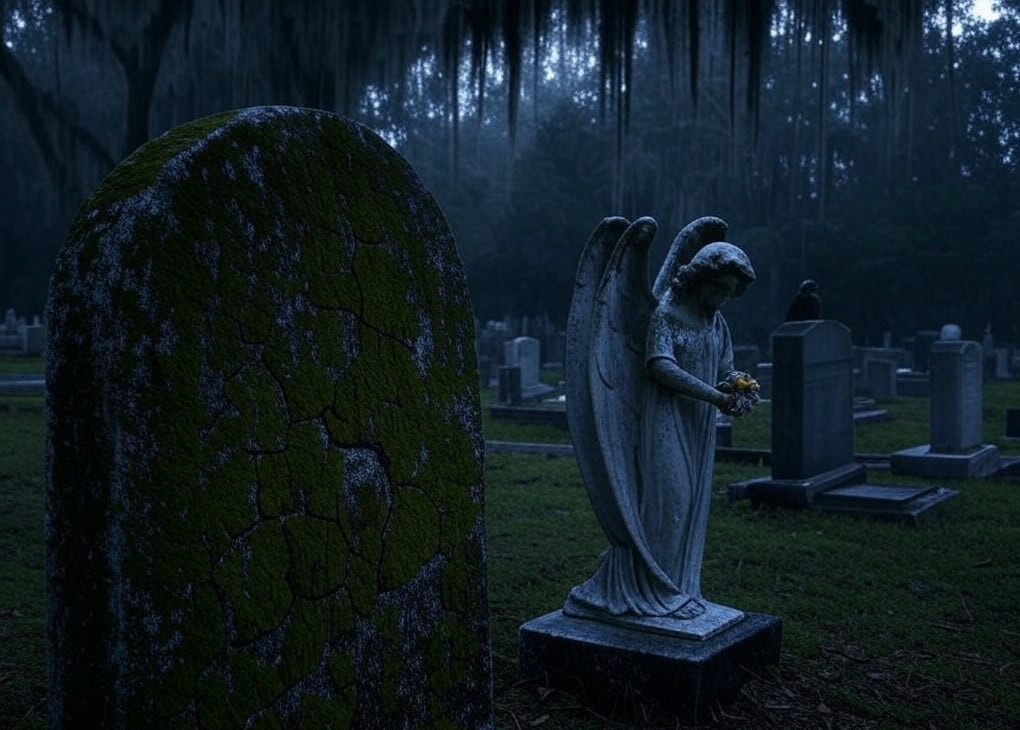
A Resting Place with a Storied Past
Established in the 1800s, Bonaventure became the final resting place for many of Savannah's most well-known residents.
The cemetery gained national attention after being featured in Midnight in the Garden of Good and Evil, a book that highlighted Savannah's connection to the supernatural.
Graves date back centuries, some belonging to Confederate soldiers, authors, and even eccentric locals whose stories live on long after their deaths.
The Legend of Little Gracie Watson
One of the cemetery's most famous spirits is Gracie Watson, a six-year-old girl who died from pneumonia in 1889.
Her grieving parents commissioned a lifelike statue of her, which still stands at her grave.
Many say the statue's eyes follow them as they walk by. Some visitors have claimed to hear a child's laughter when no one else is around, while others say they've seen a small figure darting between the headstones.
Unexplained Sightings and Chilling Encounters
Beyond Gracie's legend, other spirits seem to linger in Bonaventure. Some visitors report strange orbs of light floating through the cemetery at dusk.
Others describe the sensation of being watched, only to turn and find no one there.
The sound of footsteps crunching on gravel with no visible source has been reported more than once.
Whether these encounters are tricks of the mind or something more, Bonaventure Cemetery remains one of Georgia's most hauntingly unforgettable places.
The Haunted Fox Theatre in Atlanta
A Grand Stage with a Dark Side
The Fox Theatre in Atlanta is best known for its dazzling performances, Moorish architecture, and historic charm.
But behind its grand stage and golden ceilings, the theater holds a reputation for eerie encounters.
Staff members, performers, and visitors have reported strange voices, shadowy figures, and objects moving independently.
Some say the spirits of past employees still walk the halls, monitoring the building even after death.
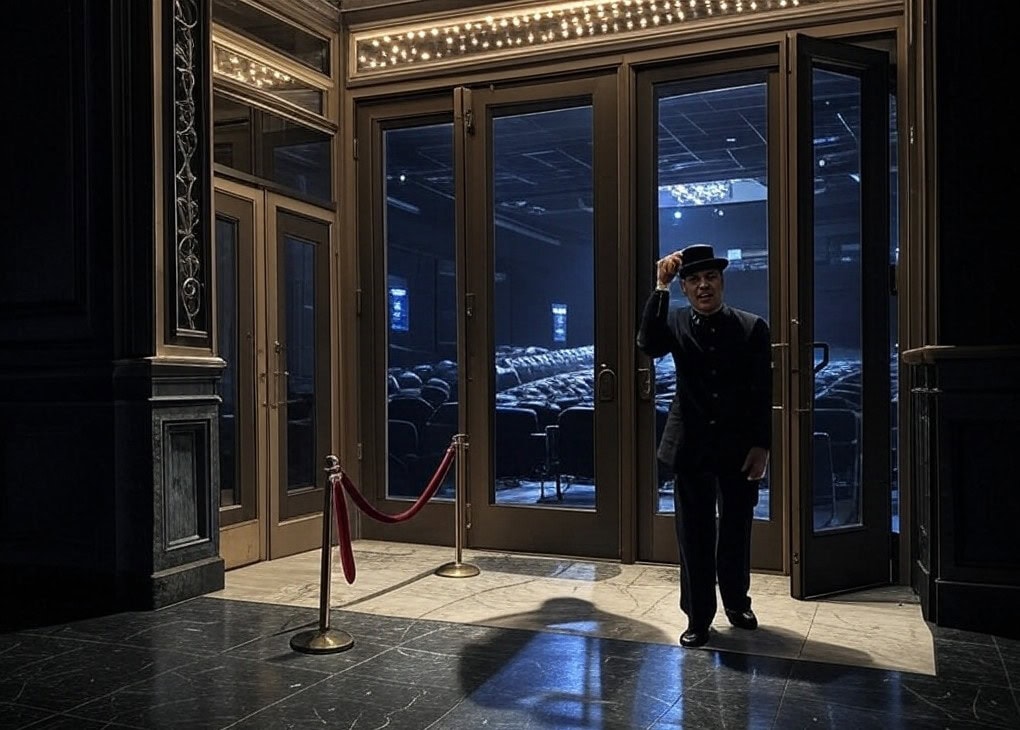
A History of Triumph and Tragedy
Built in 1929, the Fox Theatre was originally meant to be a lavish Shriner's temple before financial troubles forced them to turn it into a movie palace.
It became one of Atlanta's most popular entertainment venues, surviving the Great Depression, multiple ownership changes, and near-demolition in the 1970s.
Through all these changes, the building collected its fair share of ghost stories, many of them tied to its longtime staff.
Unseen Spectators and Ghostly Encounters
One of the most famous spirits said to haunt the Fox is that of a former projectionist who worked there for decades.
People claim to hear footsteps in the projection room long after the building has emptied for the night.
Others describe hearing whispers in the empty auditorium, as if unseen guests are still waiting for the show to begin.
Some performers even report seeing shadowy figures on the balcony, only to realize that no one is supposed to be there.
A Theater That Lives On, Even After Dark
The Fox Theatre embraces its haunted reputation, with ghost tours giving visitors a chance to explore its supernatural side.
Paranormal investigators have recorded unexplained sounds and temperature drops, adding to the mystery.
Whether it's a trick of the old building or something more, the spirits of the Fox seem to have no plans of leaving their beloved stage.
Disclaimer: The illustrations in this article are artistic representations created for informational purposes only. They are not actual photographs or direct visual documentation of the events, locations, or figures depicted.

